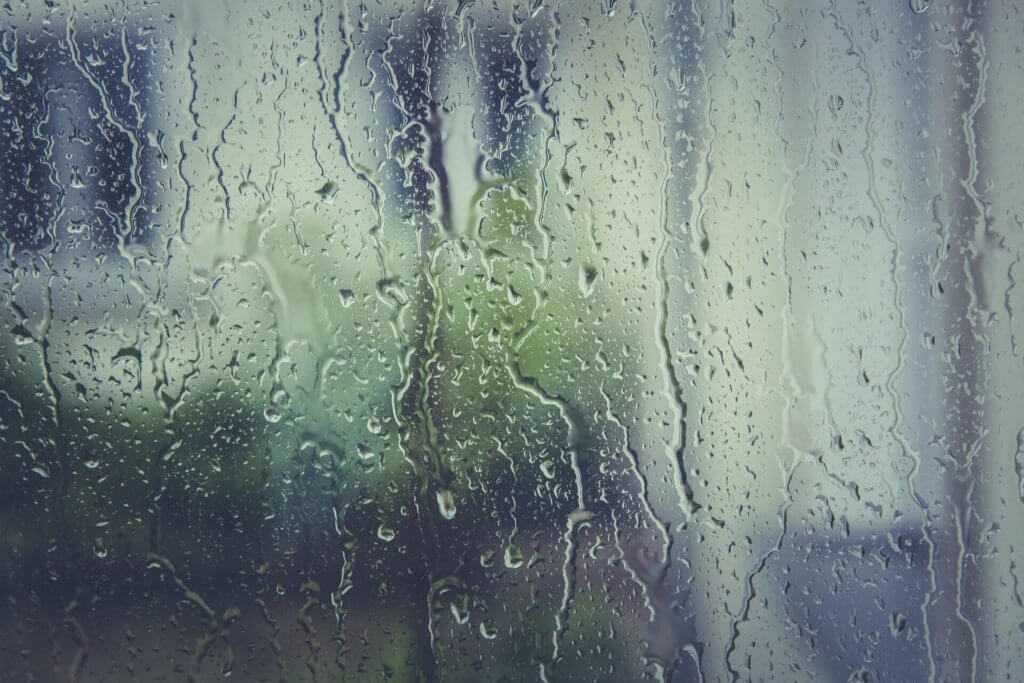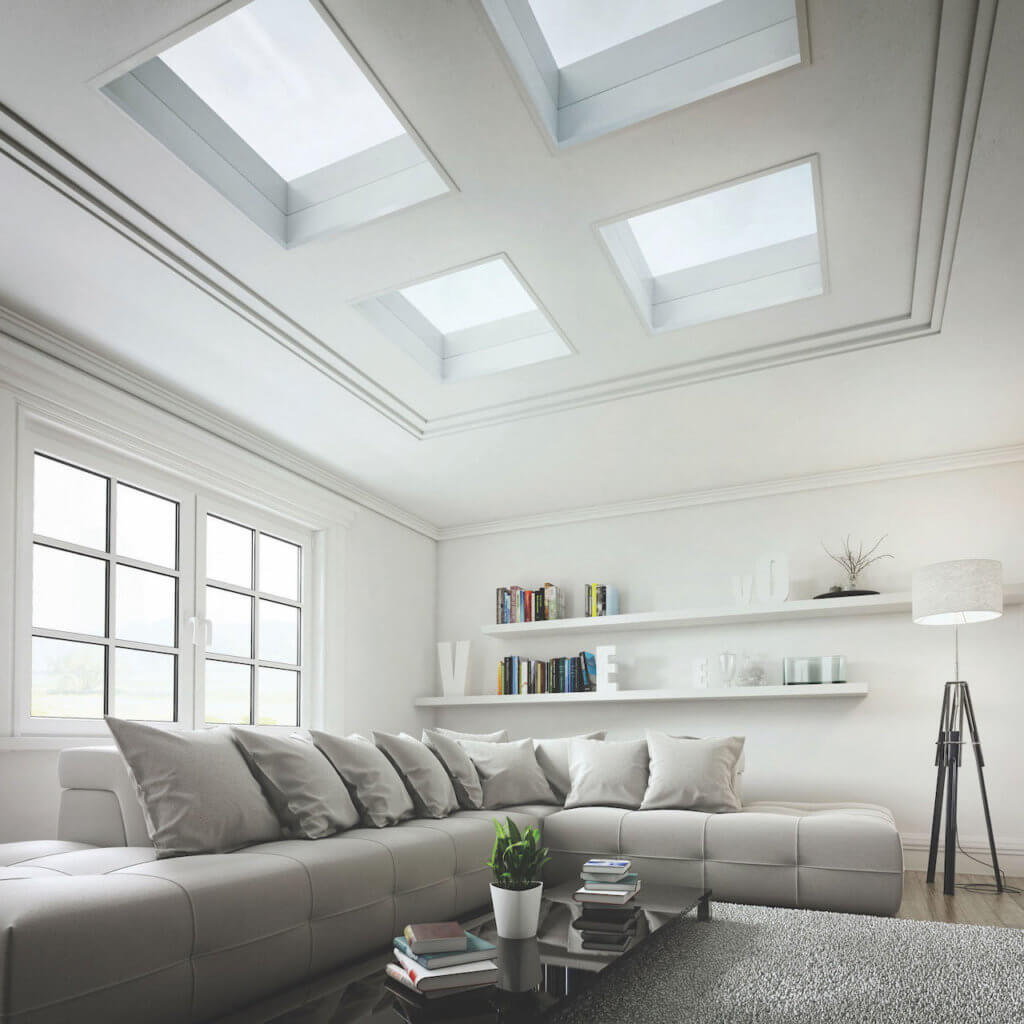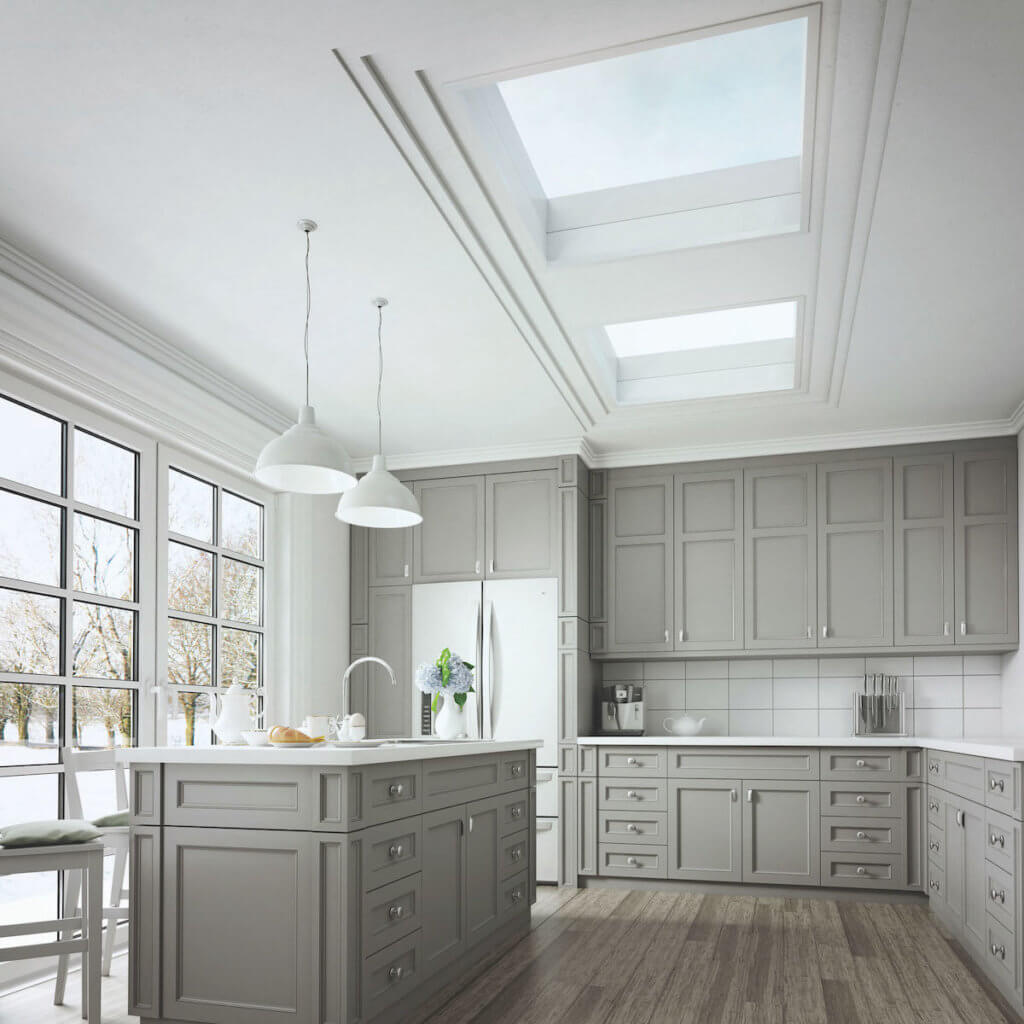Table of Contents
Flat roof windows are one of the most efficient and stylish ways to bring more natural light into your home while also increasing its curb appeal. When properly installed, a skylight can provide an abundance of daylight and fresh air, and it should not allow any moisture in, particularly rain and other precipitation.
If you’ve noticed that your flat roof window is leaking, you must address the problem immediately; otherwise, the excess moisture could rot the roof decking. The good news is that, usually, you can fix it yourself.
In our concise guide, we will walk you through the entire process of waterproofing a flat roof window, as well as some safety precautions – keep reading to learn how to do it correctly.
What Is a Flat Roof Window?
A flat roof window is a window that is installed on a flat roof. It is a type of skylight that is becoming increasingly popular in modern architecture.
They are available in a variety of sizes, shapes, and styles. From fixed flat glass rooflights to walk-on skylights to electric and manual access roof windows – you can find the perfect one to complement your home’s existing design.
However, because they are installed on a flat roof which implies sitting exposed on a roof, they are more susceptible to condensation and leakage than other types of windows, installed buried in a vertical insulated wall. That’s why it’s important to waterproof them properly to prevent any moisture from entering your home.
What Causes Flat Roof Skylight to Leak?
There are several reasons why your flat roof skylight may be leaking. In most cases, a roof leak turns out to be not a leak at all, but a condensation problem.
Condensation occurs when warm, moist air comes into contact with a cold surface and turns into water droplets. This can happen if the air inside your home is warmer than the air outside, or if the glass on your window is colder than the air inside.
Another common cause of leaks is a faulty skylight. Usually, it’s a result of an inadequate skylight installation process, and it can allow water to seep in around the edges. Alternatively, your rooflight may have been damaged after being exposed to high winds or suffering an impact.
Similarly, another potential cause of leaks is faulty roof flashing. Flashing is a thin strip of metal that is installed around the perimeter of your skylight to help prevent water from leaking in. If the flashing is not installed correctly, it can allow water to seep underneath.
Whatever the cause of a leaking flat roof skylight, getting the problem resolved should be on top of your list. Even a minor leak can be inconvenient for house residents and can result in dampness and mould, as well as damage to expensive equipment or decor. All these lead to uncomfortable living conditions and potential health hazards.
How to Identify a Leak?
Now, before you move to waterproofing a flat roof skylight itself, you need to ensure there is no other source of leakage. To do this, you can run a quick inspection:
👉 Inspect the Flashing
In most cases, a leaking skylight is caused by faulty flashing – the metal strips that are installed around the skylight to create a watertight seal. Luckily, you can usually fix the issue by simply resealing the flashing.
Once you’re on the roof, you should inspect the flashing around the skylight first. If it’s damaged or missing in some parts, it might be the source of your leak. If you detect any cracks, holes, or gaps, you’ll need to repair or replace them right away.
To do that, use a putty knife to scrape away any old sealant, remove the old flashing, and then apply a new layer around the skylight.
Or, if you decide to replace the flashing altogether, follow the same pattern but make sure to clean the area once you’ve removed the old flashing and then install the new one. Make sure that you apply it evenly and that there are no gaps left so that water can’t get through.
👉 Inspect the Flat Roof and Decking
If the flashing is in good condition, the leak might be caused by a problem with the flat roof or decking. Here, you’ll need to inspect the area around the skylight for any damage.
If you find any cracked, loose, or missing shingles or roof tiles around the window, you should repair or replace them immediately. You also need to check the area around the skylight for any signs of water damage. If there are any, you’ll need to repair the decking before proceeding with the other repairs.
👉 Examine for Condensation
If you’ve checked all of the above and still can’t find the source of the leak, condensation could be to blame. If that’s the case, you can try to reduce condensation by opening the skylight to let some air in or, if the skylight is not openable, by using a fan to improve air circulation.
If the condensation problem persists, you may need to replace the skylight with a new condensation-resistant model. Alternatively, it can be replaced with a venting skylight to enable air to circulate and prevent condensation from forming in the first place.
It’s important to note that while you can get your own hands on the issue, contacting a roofing professional in your area is a worthwhile option. They will be able to diagnose the overall state of your roof and make necessary repairs to get rid of flat roof leaks for good.
👉 Inspect the Rooflight
It’s time to inspect the skylight itself! Look out for any cracks or holes in the glass – if you find any, you’ll need to replace the pane of glass. You might be able to repair the crack with a special sealant; however, it’s advisable to replace the pane to be on the safe side.
When it comes to replacing the glass, you can do it yourself if you feel confident enough. However, it’s always better to hire a professional to do it for you to avoid any accidents.
Waterproofing the Flat Roof Window
When it comes to waterproofing roof windows, there are several methods to go about it. However, one of the most reliable and commonly used ways to achieve a waterproof rooflight is by using an EPDM rubber material.
And here is what you need to do:
- Mark the material diagonally from corner to corner using a straight edge and pen to form a cross and cut it with a pair of scissors.
- Position the skylight over the opening. You can cut the rubber membrane and then either lift it over the skylight upstand (if the skylight is already in position prior to installing the rubber membrane) or made an additional cut to the nearest membrane edge.
- Cut back the excess rubber, leaving a minimum of 75mm from the top of your flat roof window.
- Apply contact adhesive to the rooflight’s upstand and to the back of the rubber membrane.
- Bond the EPDM rubber membrane to the rooflight’s upstand after making sure that the contact adhesive is touch dry.
- Cut 9″ Elastoform tape to size and mark position on skylight corners.
- Apply rubber primer and install Elastoform tape starting at the top of the skylight and working downward stretching the tape as necessary once the rubber primer is touch dry.
- Apply pressure using a seam roller.
- If there is no flashing kit provided with your roof window, you can use the 6″ cover tape to join the rubber membrane to the window’s upstand. Cut to length ensuring a minimum of 3″ wrap-around on corners.
- Apply a final coat of rubber primer and install 6″ cover tape. Make sure to install the tape equally onto both the rubber membrane and skylight (3″ on each) and apply pressure using a seam poller.
- Use lap sealant on the edge of the tape if necessary.
- Waterproofing completed!
Safety Precautions
When working on the roof, there are some safety precautions that you need to take to avoid falling off the slope and causing yourself some serious injuries.
- Make sure to wear shoes with good traction so that you do not slip and fall.
- Wear long pants and a long-sleeved shirt to protect your skin from the sun and sharp edges.
- Wear gloves to avoid cuts and scrapes.
- If you are going to be working in the sun, make sure that you wear sunscreen and a hat to protect yourself from the sun’s harmful rays.
- If you are working near the edge of your roof, make sure that you wear a safety harness. This will help to prevent you from falling off the roof.
- Make sure that you have someone else with you when you are working on your roof in case you need help.
Takeaway
Even though flat roof windows are more prone to leaking, this issue shouldn’t arise at all if the skylight installation was executed properly. For this reason, you should consider hiring a professional to take care of the installation for you.
However, if leakage does occur, you can fix it without much hassle if you identify the cause of the leak correctly. Whether it’s condensation, faulty flashing, or a decking problem – you now know how to deal with it.
And in order to boost your skylight’s water resistance properties and avoid any leaks altogether, you can waterproof it. As you can see, the process of waterproofing roof windows is pretty straightforward and relatively simple. Once you have all the materials required and follow our instructions – you’ll be done with the improvement in no time! Happy waterproofing!



